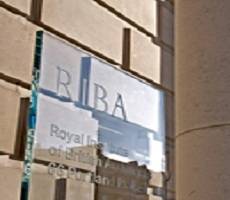April 23, 2013
Client focus as crucial as great design says RIBA
The architectural profession can’t rely on great design alone, but needs to be more business and client focused warns the Royal Institute of British Architects. According to RIBA’s 2012/13 Business Benchmarking Survey, 62 per cent of practices do not have a business plan and, of those that do, only 13 per cent plan beyond one year. Interestingly, the survey also finds that 50 per cent of the profession’s work is won as the result of a direct approach with no competitive process. RIBA President Angela Brady said: “One key element exposed in these latest results is the acute split in business management, profitability and specialisms between large and small practices on how to make the most of their own position in the market place. What is clear is that if growth is on the agenda for a practice, then simply being a great designer, or a good project runner, is unlikely to be enough.”
The data also exposes the fact that the profession needs to address continued gender inequality. Despite the fact that 30 per cent of the workforce is female, 76 per cent of these are non-fee earners and the percentage of women falls by seniority, with 40 per cent being Architectural Assistants but only 12 per cent equity Partners or shareholder Directors.
Added: Brady: “One element that I remain hugely concerned about is the gender inequality that continues to pervade the profession, with a massive drop-off in equal representation as seniority rises. We need to do much more as a galvanised profession to erase this as an issue.”
For the first time completion of the RIBA Business Benchmarking survey is a mandatory requirement for all RIBA Chartered practices, with the results reflecting architectural practice across the United Kingdom. RIBA has identified the following key trends:
- Chartered Practices have a combined income of £1.58bn of which, almost half is earned by large practices ( 3 per cent of Practices)
- Average profit to turnover is around 22 per cent. This percentage falls the larger the practice; almost 40 per cent of large practices make less than 10 per cent profit.
- 20 per cent of income comes from projects outside the UK. This leaps to 36 per cent for large practices and 33 per cent for London practices.
- 62 per cent of practices do not have a business plan and, of those that do, only 13 per cent plan beyond one year.
- 30 per cent of the workforce is female: 76 per cent of non-fee earners but only a quarter of fee earners are women.
- 50 per cent of the profession’s work is won as the result of a direct approach with no competitive process; 21 per cent is won through straight fee bids.
- One-off houses account for 9 per cent of the profession’s fees. The residential market accounts for 25 per cent; education for 15 per cent. Mixed use (13 per cent) and offices (11 per cent) are the only other sectors to contribute more than 10 per cent.
The Executive Summary for the most comprehensive survey of Chartered Practices to date can be found on architecture.com
By Sara Bean















CIBSE creates diversity panel to reflect varied workforce - Office Insight
April 23, 2013 @ 5:24 pm
[…] environment sector more inclusive appear to have moved up a gear. RIBA President Angela Brady has voiced concerns on the “gender inequality that continues to pervade the profession,” now the […]